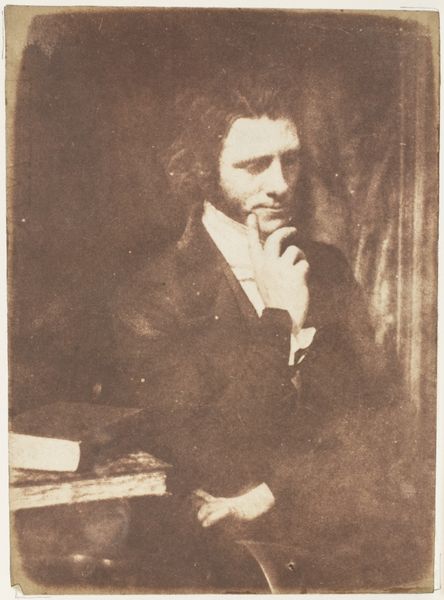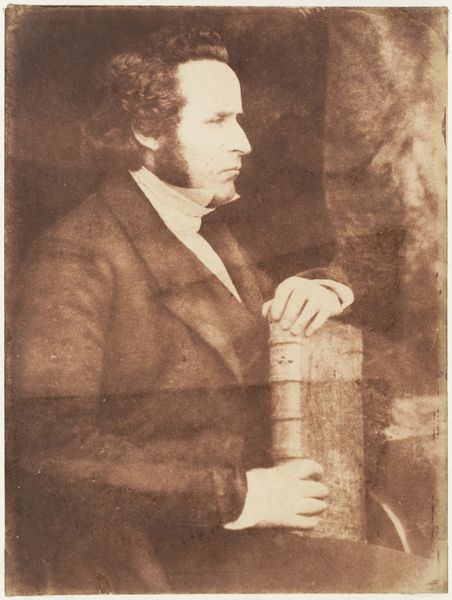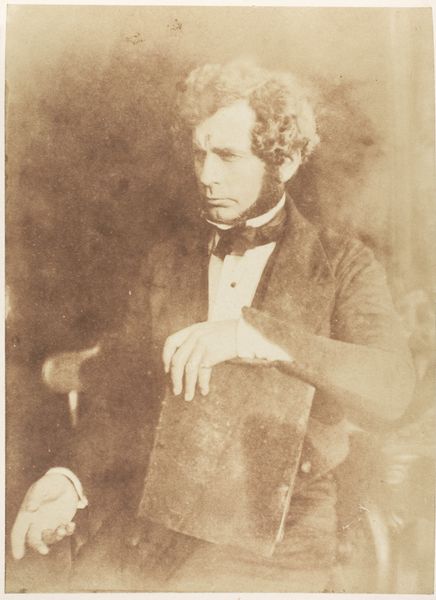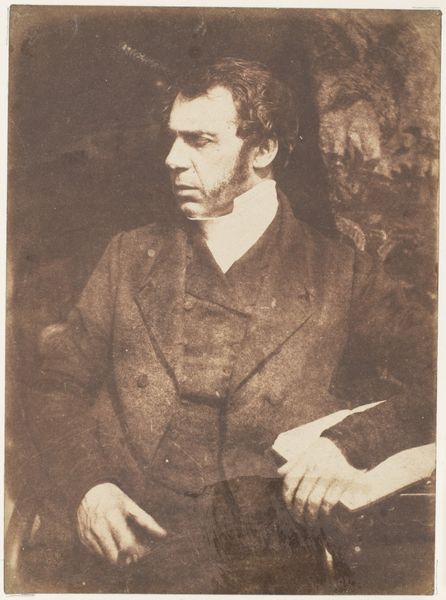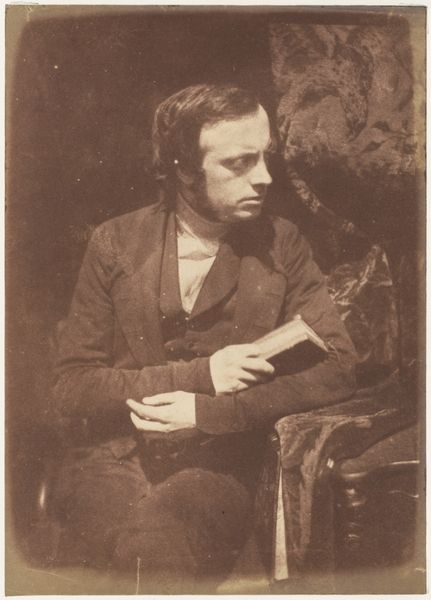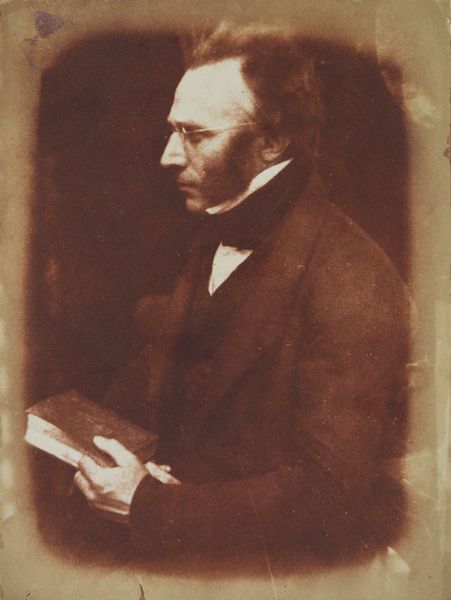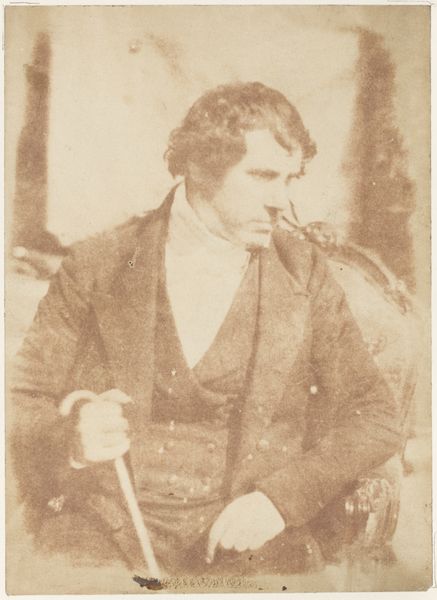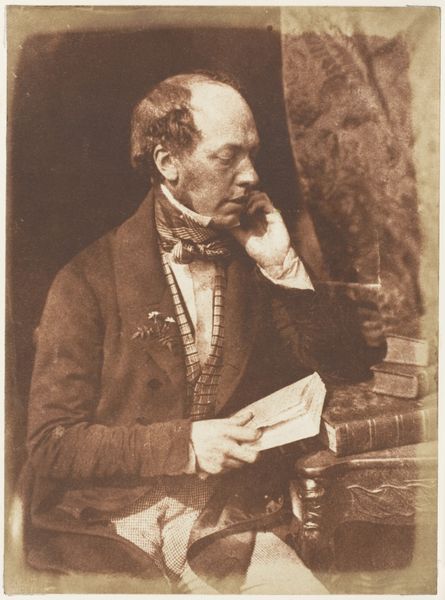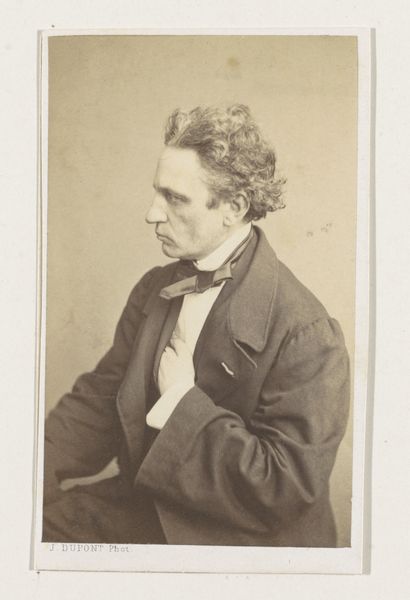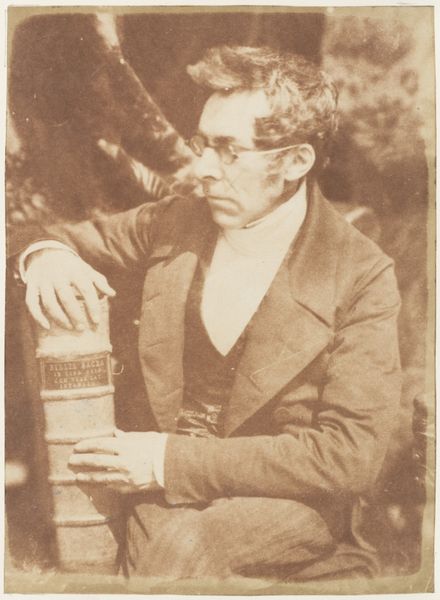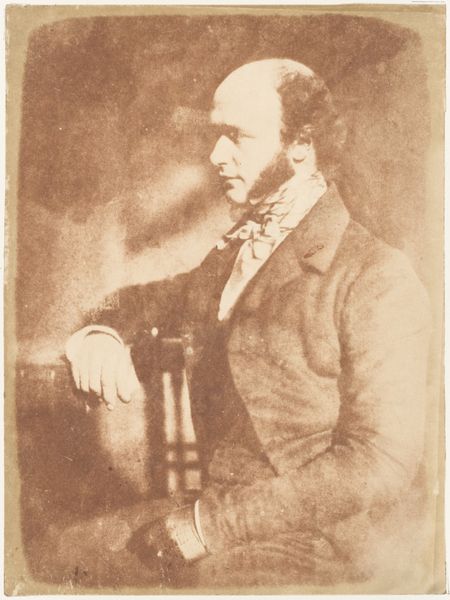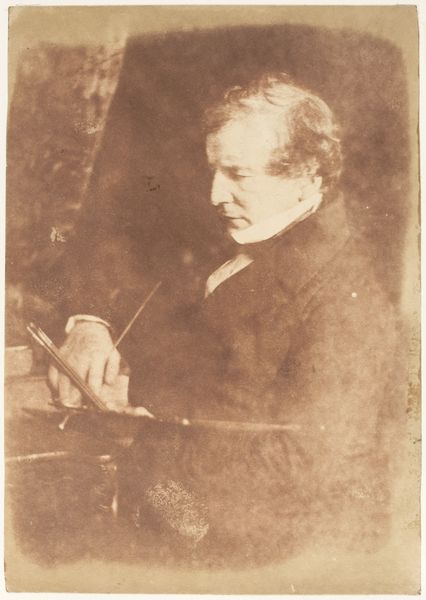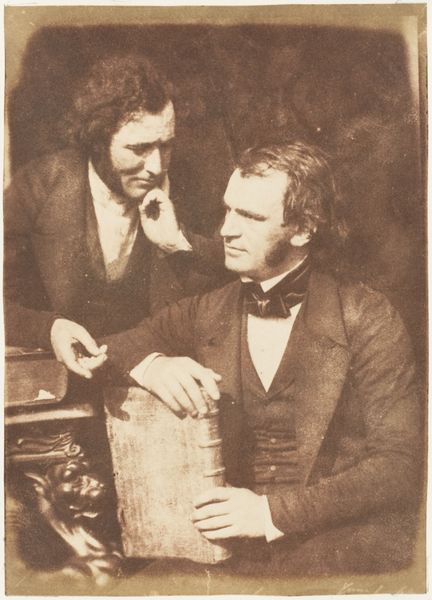
Dimensions: 20.3 × 15.3 cm (image); 29.3 × 22.8 cm (paper)
Copyright: Public Domain
Curator: Here we have "Portrait of James Nasmyth," a photograph attributed to David Octavius Hill, dating somewhere between 1844 and 1900. Editor: Oh, the quiet drama of it! He's all shadow and brow, looks like he's wrestling with the weight of the world... or maybe just a really complex equation. Curator: Indeed. Hill employed the daguerreotype process, a very early photographic technique using a silvered copper plate. Think about the labour involved – polishing that plate, sensitizing it, exposing it for what would have been a lengthy period, and then developing the image. Each portrait becomes a significant act of production. Editor: I love that! It's like each photograph is an intimate dance between light, chemicals, and sheer human will. It is incredible. He has got such dark, piercing eyes! It draws you in. And the way he's holding that enormous tome. I wonder what knowledge it contains. Curator: Nasmyth was a prominent Scottish engineer and inventor. Hill's portraits often aimed to capture the spirit and character of his sitters. Think about the Victorian ideals of industry and progress that Nasmyth embodies. Hill strategically positions Nasmyth with symbols of labor. Editor: He almost looks melancholy though, despite the book. Like even knowledge has its limits, you know? Maybe that is just me imposing my contemporary angst, though. Curator: Maybe so. Yet, photography itself during this era represented a huge shift in knowledge production and dissemination, creating reproducible images that could be shared and consumed widely. That directly impacts labor involved in representation. Editor: It makes you think about how images shape our perception. We view Nasmyth here. He might be a visionary and be grappling with the burden of creation in front of us, depending on what we bring to it. It's fascinating to me. Curator: Absolutely. It reflects the power of capturing a moment and transforming it into an object of analysis and consumption, doesn’t it? It brings it all back to materials, how materials like this changed our understanding of so many things. Editor: That’s it, this encounter has made me newly alert to how labor and melancholy meet! I really appreciate this glimpse into history. Thank you.
Comments
No comments
Be the first to comment and join the conversation on the ultimate creative platform.
